What do the world's first computer algorithm, CRISPR gene-editing technology, and the discovery of radioactivity have in common? These game-changing discoveries were all made by female scientists.
This March, Scripps Institution of Oceanography at UC San Diego joins in celebrating Women’s History Month, including International Women’s Day on March 8. These events provide an opportunity to recognize women and the important contributions they’ve made throughout history in science, culture, medicine, and more.
Scripps Oceanography has a long history of women making waves, starting with the institution’s founding in 1903 by a trailblazing woman, philanthropist Ellen Browning Scripps, and her brother E.W., a newspaper magnate. In the years that followed—and despite facing many challenges—women expanded their presence at Scripps, making significant contributions to scientific research, education, and leadership. This work carries on today through current Scripps Director Margaret Leinen; the many talented women serving as faculty, staff, students, and researchers; and powerful alumnae including NASA astronauts Jessica Meir and Megan McArthur, President of the National Academy of Sciences Marcia McNutt, marine biologist and policy expert Ayana Elizabeth Johnson, and more.
As Scripps works to build a more equitable, diverse, and inclusive campus community, there is still progress to be made. With a nod to the future of earth and ocean science, we’ve interviewed several early-career scientists at Scripps to learn about their work, what changes they hope to see for women in STEM, and much more.
Alejandra Sanchez-Rios
Postdoctoral Fellow with the Multiscale Ocean Dynamics Lab
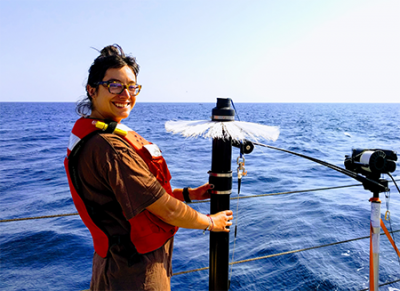
What are you researching?
My research focuses on studying mixing across ocean currents with different temperature and salinity properties. Similar to when cold cream is added to hot coffee, when water with different temperature and salinity meet in the ocean, interesting filaments and structures are created that enable mixing and connect the surface with the ocean interior. This primarily happens at ocean fronts, so I’m involved in fieldwork projects where we survey fronts and capture small-scale features where mixing occurs to quantify the exchange of heat and salt across different ocean current boundaries.
Your favorite part of being a scientist is…
Feeling like an explorer. When I'm either in the field or analyzing new data sets, it feels I'm following my curiosity freely, and that freedom is a great privilege. I also enjoy working with others trying to understand how a physical process develops.
Who is one female role model in your life or career who helped show you the way forward?
Loretta Ross. She is an academic and an activist. I don’t know her personally, but I studied her work when I was in graduate school and have heard several of her speeches. She has really inspired me to continue working in academia and find a way to stay on my own terms. She researches reproductive justice, and although this subject is not directly related to physical oceanography, her work opened my eyes to issues that women of color face daily and to the framework of social justice to critically evaluate our institutions. She collaborates with scientists from different fields to explore how current social constructs explain the unjust system we maintain. Studying her work has helped me understand my responsibility and place in academia. Making sure I contribute to creating a space where everybody can express themselves and be respected equally. The way she writes and expresses complex social problems is beautiful, powerful, and clear.
What advice would you give to early-career scientists, particularly young women of color, who are considering pursuing a graduate degree or a career in academia?
I would advise finding advisors, mentors, and peers that would care for them and listen to them. People with whom they can be 100 percent themselves in the lab, in the field, and the classroom, which will allow them to explore who they want to be in academia safely in seminars, in conferences, and when meeting other senior faculty. Also, on a more technical note, to work on their relationship with writing early in their academic career—any kind of writing. It can become a beautiful form to express yourself and your science if you have a confident relationship with it, which I still struggle to have.
Looking to the future, what changes do you hope to see in the STEM field?
I hope we create a more inclusive and just definition of what “academic success” is and broaden our idea of who a “scientist” is. In the future, I hope the value of researchers does not depend only on publications, grants, and prestige in the field but on how they relate to the broader community, their students, and their peers. And that as a community, we improve our communication with the general public.
Ali Mariko Dressel
Graduate Student, Master of Advanced Studies program in Marine Biodiversity and Conservation
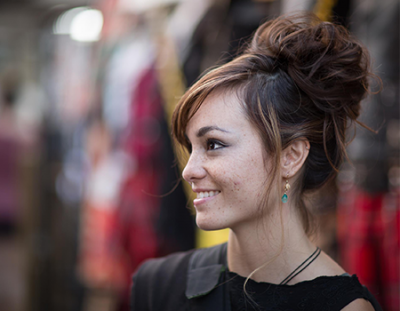
What are you researching?
As a graduate student in the MAS MBC program at Scripps, I am exploring how performing arts and immersive experiences can help drive social action toward ocean conservation, climate resilience, and social justice. For my capstone project, I am using dance, music, and immersive design to engage communities and communicate how climate change impacts coral reefs, how deep-sea mining threatens midwater ecosystems, and how we as a greater community can take action.
Your favorite part of being a scientist is...
Never-ending curiosity! I love that science encourages the exploration of ideas. Will it work? Let's find out!
Who is one female role model in your life or career who helped show you the way forward?
Dr. Monica Stufft is one of my favorite people! She was my advisor while I was an undergraduate student at the University of San Diego. She inspired and trained us to be scholar-practitioners, and to this day, I strive to ensure that my work is informed by theory and that my theory is informed by action. Now she is helping advise my current project, bringing to light the role that theater plays in conservation/climate action and social change.
What advice would you give to early-career scientists, particularly young women of color, who are considering pursuing a graduate degree or a career in academia?
The most important thing you can do is believe in yourself. Be proud of who you are, cultivate confidence from within, and honor your unique perspectives. Especially for women of color, know that you are strong, you are capable, and you are resilient. I am Piro (indigenous to the southwest United States), Japanese, and European-heritage, and my multi-cultural identity no doubt helps me understand and synthesize different worldviews and approaches. Honor your ancestors by pursuing your dreams, wherever they may take you.
Looking to the future, what changes do you hope to see in the STEM field?
More creativity and traditional knowledge! I would love to see teaching methodologies in the STEM field evolve and find ways to more actively engage students with participatory-based activities. I would also love to see more integration of traditional wisdom, knowledge, and scientific practices.
Cathryn Sephus
First-year PhD student in biological oceanography, working in Amina Schartup’s lab
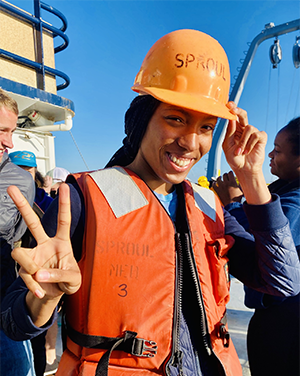
What are you researching?
My research currently focuses on understanding the intersection of ancient marine molecular biology and geochemical cycling. My work involves studying the evolution of metalloproteins and enzymatic antioxidants in the context of oxygenation events, modeling biogeochemical systems, and computationally analyzing genetic data.
Your favorite part of being a scientist is...
Continuously learning. Whether it’s learning a new concept in a classroom, learning about a novel finding at a conference, learning to apply a new skill to my research, or just learning from my own mistakes—I feel genuinely fulfilled by the perpetual stream of knowledge being a scientist enables me to have.
Who is one female role model in your life or career who helped show you the way forward?
I am fortunate that there have been several driven, compassionate, and inspiring women in my life that have served as role models and propelled me forward towards my goals. One woman who embodied all three adjectives and catalyzed my development as a young scientist was Dr. Betül Kaçar, assistant professor of Molecular and Cellular Biology and Astronomy, then at the University of Arizona. I joined Dr. Kaçar’s lab in its early stages as a fellow in the NASA/Arizona Space Grant Program during my senior year and stayed in her lab to complete my Master of Science degree. With her mentorship and unmatched dedication, I learned how to articulate questions, conduct sound research, communicate my work to academics and non-academics, and so much more. My time in her lab gave me the space and opportunity to grow as an independent researcher, and I am very grateful for that.
What advice would you give to early-career scientists, particularly young women of color, who are considering pursuing a graduate degree or a career in academia?
You don’t need to fake it until you make it, you just need to be you and that’ll do. “Fake it until you make it” is a well-meaning piece of advice sometimes given to us as words of wisdom to help in difficult or uncomfortable situations. But I think it’s important to know that appearing confident is not the same thing as being confident, pretending to understand is not the same as understanding, and feigning knowledge is not the same as being knowledgeable. Sometimes all the “faking it” can lead to developing an imposter syndrome—doubting your real abilities and feeling like a fraud, but it doesn’t need to be that way. If you’re nervous to present in front of an audience, that’s completely normal and fine to feel! With enough practice, you’ll get used to it. If you’re confused by a lecture, it’s okay to raise your hand to say, “I don’t understand,” and ask for clarification so that you’ll know going forward. If someone asks a question about your work that you don’t have an answer to, it’s okay to say, “I don’t know.” I think it’s perfectly fine (and way less stressful) to just be authentically you.
Looking to the future, what changes do you hope to see in the STEM field?
I hope to see an increase in accessibility across the STEM field. I believe that all students deserve to receive a high-quality and enriching experience in STEM but recognize that having access to such experiences can be limited for people with both visible and invisible disabilities. I want to see and be a part of a shift in the STEM field to create and provide access and experiences to students with mixed abilities, empower student voices to speak on issues of inaccessibility and plans to mitigate exclusion, and incorporate technology to promote inclusion in academic settings.
Kait Frasier
Assistant Research Scientist and Principal Investigator of the Scripps Machine Listening Lab
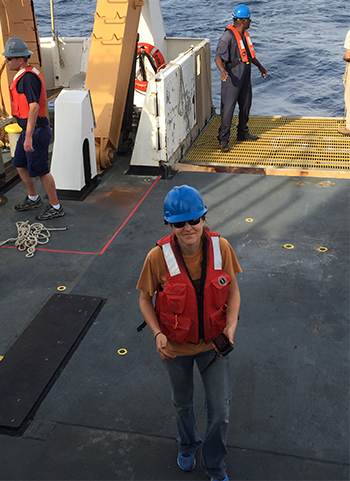
What are you researching?
I am interested in the use of underwater sound as a tool for monitoring change in the open ocean across large spatial and temporal scales. My work involves collecting very large sound datasets at sea, and developing computational strategies to find and interpret interesting signals in the data. My team and I look for everything from biological sounds made by whales, fish and crustaceans, physical sounds such as those made by weather and waves, and human-generated sounds from things like commercial shipping and natural resource extraction. We aim to understand how all of those sounds interact with the variable ocean, and what we can learn from them.
Your favorite part of being a scientist is…
Those times when you've been working on a research challenge for months and finally get something working! For a moment you've done something that has never been done before or are looking at new results for the first time, and all of your efforts are suddenly rewarded. Those moments of discovery are what keep me going.
Who is one female role model in your life or career who helped show you the way forward?
Dr. Jane Lubchenco, one of the preeminent scientists in the world, having led NOAA, served twice in the White House, and been honored as a MacArthur Genius, is also a professor and researcher in oceanography at Oregon State University, where I did my undergraduate studies. The experience of being involved in her research program, PISCO, as a budding scientist, attending her lectures, and witnessing her incredible career helped me believe that there could be a place for me in oceanography, and that the research we do can help encourage ocean stewardship and identify solutions for sustainable use of marine systems.
What advice do you have for young girls or women that want to get into earth and ocean science?
Learn a little bit of programming! I meet a lot of young people who want to make a positive contribution through science, and they are surprised to learn that science involves a lot of computing. I would encourage anyone who wants to get into this field to take a beginning programming course. Writing code is actually really fun, rewarding, and unlocks so many opportunities in modern research. You can learn to code, even if you don't think of yourself as a “computer person,” and it will help you make a difference.
Looking to the future, what changes do you hope to see in the STEM field?
I think we are starting to make some progress on diversity in STEM, but we have a long way to go. I hope that those of us in academia will continue to reevaluate and challenge some of our long-held stereotypes about what a scientist looks like and how they must perform. We need to look for opportunities to help support retention of diverse participants in science and recognize that there is more than one way to be a fantastic scientist. Our student body is slowly becoming more diverse, but we need to work to ensure that those students can have long, rewarding, successful careers in STEM.
Katherine Guns
Postdoctoral Scholar at the Institute of Geophysics and Planetary Physics
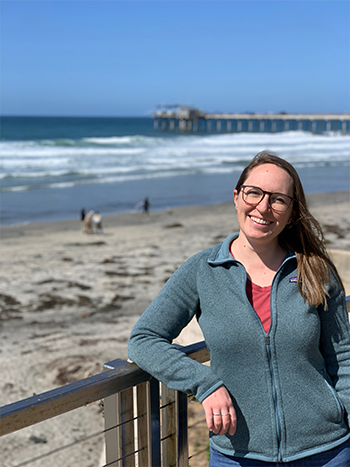
What are you researching?
Our group at IGPP measures tiny, millimeter-to-centimeter changes in how the surface of the earth moves, using space-based geodetic instruments like the Global Positioning System (GPS) and synthetic aperture radar (SAR) satellites. My current focus is on tectonic plate boundary motion in California, and in particular, I study the processes that occur before, during, and after large earthquakes. There was a sequence of earthquakes that happened in July 2019 in Ridgecrest, in eastern California, and the post-earthquake motions are actually still ongoing! I work to characterize what those motions can tell us about the structure of the subsurface of our Earth.
Your favorite part of being a scientist is…
Getting to learn something all the time, whether it’s a new conclusion your data is suggesting, or a new skill you need in order to be able to collect or interpret new data, or a completely new perspective from another scientist. Sometimes it can get daunting, and even humbling, to think just how much we don’t know about, say, how our Earth works. But if you flip that around, it just means there’s so much more exploring we get to do.
Who is one female role model in your life or career who helped show you the way forward?
Dr. Kim Blisniuk. She was a postdoctoral fellow at the time when I was an undergraduate student, and we met while she was a teaching assistant in one of my classes. Not only did she introduce me to my favorite branch of earth science (active tectonics), but she also was the first person to encourage me to go on to graduate school. She inspired me with her work ethic and her ability to both have a life outside work, and do amazing science at the same time.
What advice do you have for young girls or women that want to get into earth and ocean science?
Don’t get stuck thinking that there is only one way to be a scientist. There are so many ways to study this planet. Maybe you don’t like being outside in the field? Take a computer science course! Work in a lab! Is being out in the field your favorite thing? Find a job that has lots of field data collection! There is no one right way to do it, and science needs all kinds of people with all kinds of backgrounds to solve the questions of today. Whatever path you take does not have to be linear either—I definitely started out thinking I was going to be a field-based geologist and nothing else, but today I find myself working with computers more than rocks!
Looking to the future, what changes do you hope to see in the STEM field?
I only have experience in academia so far, but from what I have seen and experienced, I would strongly hope to see far more perspectives represented in the future. I want everyone who has something to say or contribute, to be able to feel welcome, included, and able to say it, wherever they are working. I will hope that there is a future out there where instead of a person being discouraged from pursuing a degree or job because they don’t see any examples of anyone like them doing that job, they have a wealth of examples and role models to learn from. Above all, I’d like to live in a future where no person is actively persuaded that they don’t belong in a space only because the people that currently occupy that space are made uncomfortable. That’s what I hope for.
Mele Johnson
Staff Research Associate for the Coastal Processes Group
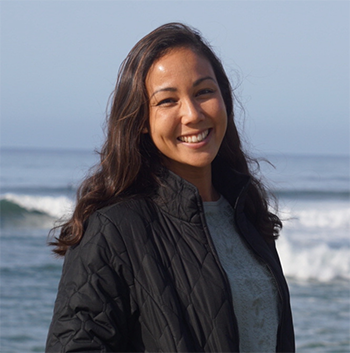
What are you researching?
I work on a variety of programming and data analysis projects related to coastal oceanographic processes, ranging from website designs and development to wave runup analysis and drone imagery processing. I create many of the data viewing tools on our website, one of the most useful being our coastal flooding forecasts which were able to successfully warn Imperial Beach of impending large flooding events over the last couple of years.
Your favorite part of being a scientist is…
That it combines two things I enjoy the most—the ocean and programming. Growing up on the beaches of Hawaii and California, I discovered science as a way to better understand coastal processes and the changes I noticed on my local beaches over time. Now at Scripps, I get to be a part of using science to predict and mitigate those changes, all while spending the day at the beach and getting to call it work!
Who is one female role model in your life or career who helped show you the way forward?
At a young age, my mom inspired a love for science and taught me how to set my goals high because I can achieve anything I set my mind to. She showed me how to advocate for myself and push for what I want in order to further my career. While there is still a gender disparity in STEM today, when my mom was starting her science career there were very few women in the field but she persevered, becoming well respected in the oceanography field as a Scripps scientist. Her drive and strength are inspiring and she continues to be a role model for me and for other women at Scripps.
What advice would you give to early-career scientists, particularly young women of color, who are considering pursuing a graduate degree or a career in academia?
My biggest piece of advice for those pursuing a future in science is to focus on learning the scientific way of thinking and how to approach problem solving but not feel stuck in one field or in the topic they’re studying. I was a chemistry major in college and worried that I wouldn’t be able to work in oceanography because I had limited physics and oceanography knowledge. However, once I started, I didn’t feel at all at a disadvantage and was able to learn along the way, utilizing my science background and programming skills to be successful in the position.
Looking to the future, what changes do you hope to see in the STEM field?
As a programmer in oceanography research with a mainly computer science background, I hope to see more cross-disciplinary researchers and collaboration across fields. I also hope to see more emphasis on research products that are accessible to those outside of the specific STEM field they are created for. Publishing papers is important but due to a lot of field-specific language they can be difficult to interpret for scientists outside of the field and stakeholders who use the research to make decisions. I’d like to see more online data products that can be tailored to those who are directly impacted by the research results and utilize the overlap of programming and scientific research.
Natalia Rangel
Graduate Student, Master of Advanced Studies program in Climate Science and Policy
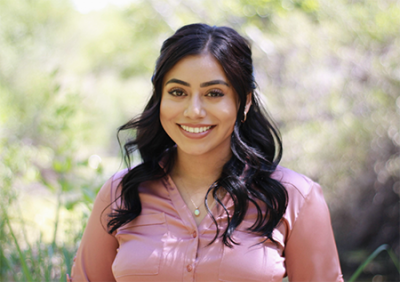
What are you researching?
As a graduate student pursuing a degree in the MAS CSP program at Scripps, I am involved with the Center for Global Justice at UC San Diego for my capstone project. The project proposes to integrate social risk reduction and ecological resistance planning on a local scale for the San Diego-Tijuana border region by disseminating social and ecological knowledge to develop appropriate community responses to climate change consequences. I will introduce collaborative planning instruments and package these tools into climate adaptation strategy “toolkits” and execute educational workshops. This is intended to support cross-border planning and outreach in the Los Laureles Canyon, a series of informal neighborhoods situated in western Tijuana. The goal of this project is to build community capacity and socio-ecological resilience in respective communities.
Your favorite part of being a scientist is…
From my parents, I inherited an insatiable passion for learning which ignited a constant thirst for knowledge. Prior to attending Scripps, I worked as a wildlife biologist where I learned more about the natural environment. I have been stimulated to embrace the ideas and perspectives of others which has invited many opportunities. Science invites change and evolution in thought and assumptions, which is exciting. More and more I get the opportunity to exclaim, “I did not know that!” which opens another opportunity to grow and understand the virtue of being aware that I do not know enough. Challenging myself and learning through experience is my favorite part of being a researcher.
Who is one female role model in your life or career who helped show you the way forward?
The strongest female role model that I have in my life is my mother. I was barely able to crawl when we immigrated to the United States in search of a better life. Her story is one of hard work, sacrifice, and resilience in a society that has behaved antagonistically toward cultural and ethnic integration. She has constantly reminded me that my culturally diverse experiences are key to fostering diverse interactions and building influential relationships which have been conducive to my development as a well-rounded scientist. Her guidance has inspired me to influence progressive change in disadvantaged communities and make a difference.
What advice would you give to early-career scientists, particularly young women of color, who are considering pursuing a graduate degree or a career in academia?
You are enough and you are more than capable. Allow the desire to foster positive interactions within your community to drive your pursuit of higher education. Find your passions and volunteer without worrying about the outcome. Take advantage of each opportunity and show commitment through dedicated service, be present, and be engaged.
Looking to the future, what changes do you hope to see in the STEM field?
I hope to see STEM disassociate from national defense and focus more on improving the human condition. STEM has largely been the result of competitive technologies and innovation. Rather than focusing on national defense education, I believe it’s important to redirect attention towards improving our quality of life and of those around the world. Additionally, I hope to see more diversity in STEM fields, specifically women of color. Women of color that have championed ingenuity in STEM are trailblazers and have paved the way for us. Diversity and inclusion are critical to fostering creativity and innovation in STEM.
Sarah Nossaman Pierce
Staff Research Associate at California Sea Grant
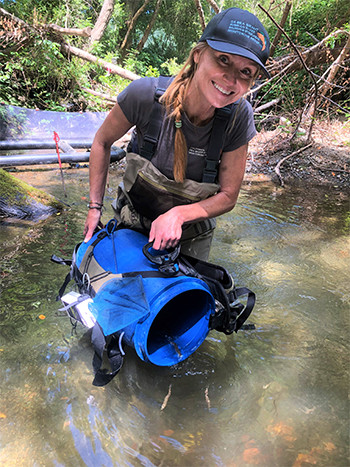
What are you researching?
I’m working with California Sea Grant’s Russian River Salmon and Steelhead Monitoring Program. We monitor endangered and threatened salmonid populations, conduct research to identify habitat needs and limiting factors, and provide scientific information to partners to help inform recovery actions.
Your favorite part of being a scientist is…
Figuring out how to answer complex questions and interpreting outcomes from the data. I also love working towards positive change in the world. Even if we don't succeed in recovering our native salmon, every action that we take towards that end helps to improve the health and resiliency of the entire ecosystem, and that resiliency is more important than ever in the face of increasing climate volatility.
Who is one female role model in your life or career who helped show you the way forward?
Gail Seymour, a retired California Department of Fish and Wildlife biologist. Gail started working in the natural resource management field in the early ‘70s. She was nearly always the only female and Japanese-American on the job in the early years and endured relentless sexism and prejudice for decades, but never gave up. On the contrary, she became more resilient and resourceful. Her fortitude and perseverance made her adept at navigating the bureaucracy and effecting change. She always advocated for what was best for the species and the environment, no matter how much work or push-back it created. Gail's example helped me to embrace my strengths working in a field dominated by men in my early years, and to let go of what other people think and push for what I believe is right.
What advice do you have for young girls or women that want to get into earth and ocean science?
Everyone has unique attributes, skills and insights that can add value to the collective effort, no matter how much education or experience you have. Own yours with confidence and grow them by finding ways to apply them. Think critically about each situation, notice where the needs are, figure out what you can contribute—even if it's not conventional—and take initiative. Most of all, remember to listen to your own intuition. Innovative thinking requires engaging your heart, as well as your head.
Looking to the future, what changes do you hope to see in the STEM field?
I’ve been working in biological sciences for over 25 years and, over that time, have had the pleasure of seeing the integration of more women into the field. I hope that trend continues, along with greater representation by people of color, because increased diversity brings greater strength and balance to the workplace. The more diverse perspectives we can add to the equation, the more likely we are to come up with creative solutions to the very complex challenges facing us. Scientists often act as society’s problem solvers and I believe that the more representative our scientists are of the society they serve, the more effective they can be in that role.
I would also like to see an increased emphasis on social-ecological systems approaches, which recognize the interdependencies between social and natural systems as a critical component of addressing environmental challenges.
UC San Diego is also celebrating women throughout the month of March with several “Women’s Herstory Month” programs. Visit the Women's Center website to see the full list of free events.
About Scripps Oceanography
Scripps Institution of Oceanography at the University of California San Diego is one of the world’s most important centers for global earth science research and education. In its second century of discovery, Scripps scientists work to understand and protect the planet, and investigate our oceans, Earth, and atmosphere to find solutions to our greatest environmental challenges. Scripps offers unparalleled education and training for the next generation of scientific and environmental leaders through its undergraduate, master’s and doctoral programs. The institution also operates a fleet of four oceanographic research vessels, and is home to Birch Aquarium at Scripps, the public exploration center that welcomes 500,000 visitors each year.
About UC San Diego
At the University of California San Diego, we embrace a culture of exploration and experimentation. Established in 1960, UC San Diego has been shaped by exceptional scholars who aren’t afraid to look deeper, challenge expectations and redefine conventional wisdom. As one of the top 15 research universities in the world, we are driving innovation and change to advance society, propel economic growth and make our world a better place. Learn more at ucsd.edu.